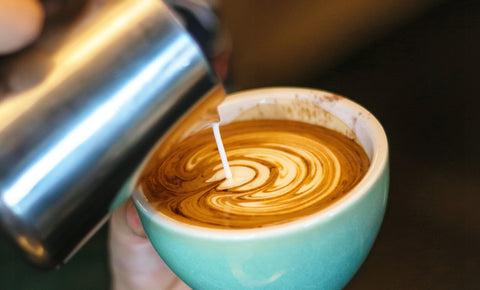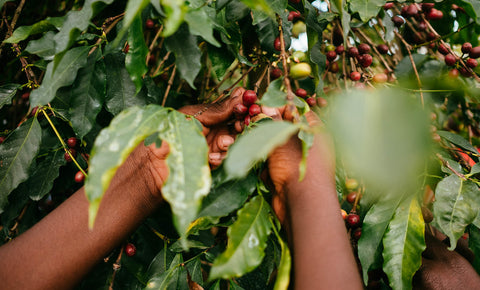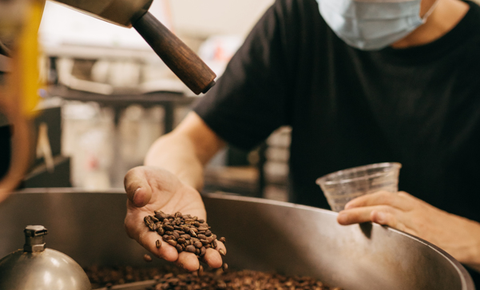 Flat (no foam) and white (milk) — Aussies sure do like to keep it simple. The fact that this coffee is an absolute staple on any Australian/New Zealand café menu, as well as one of the most ordered coffees in our part of the world, makes it surprising that it hasn't really taken off anywhere else. I think I know why, but being a foreigner myself I thought it might be best to show some due diligence and do a bit of research. (Enter Google)
Flat (no foam) and white (milk) — Aussies sure do like to keep it simple. The fact that this coffee is an absolute staple on any Australian/New Zealand café menu, as well as one of the most ordered coffees in our part of the world, makes it surprising that it hasn't really taken off anywhere else. I think I know why, but being a foreigner myself I thought it might be best to show some due diligence and do a bit of research. (Enter Google)
Was I surprised to not find many hardened 'facts' about the flat white on the internet? Not at all! And, in an era in which we rely so much on Google to give us the 'all the facts', it's no wonder customers are easily confused. One titbit of info that was news to me was that a food historian gave Sydney coffee drinkers in the 1980's the credit for coming up with the term 'flat white.' He says it was as simple as the coffee being 'flat and white' in contrast to a 'long black' and a 'short black.' To that claim, I say that it sounds like a very logical Australian thing to do. End of naming story.
There were, of course, a couple sentences which started with statements such as, 'A true flat white ought to have...' There were also some claims that it 'should' be served in a 150ml-160ml cup. One internet writer even went as far as to say that it 'must' be served over a 'single or double ristretto' which kind of surprised me. Regardless of what I think to be true, the reality is that there is no 'original recipe' for a flat white. It started as a trend and doesn't fit perfectly into any box. (But isn't that what we all like about coffee?) However, it isn't all intangible and elusive; there are some 'realistic expectations' for customers when ordering a flat white. These expectations are based on current trends (i.e. what cafés are now serving) which then help define the drink. It really is no use saying, 'It should be served in a 150ml cup' if that means that 90% of cafés are serving it in the 'wrong' way.
The neat thing about trends is that they are always changing — and I actually think we are on the cusp of another shift. The truth is that speciality coffee people start most of the café trends which have anything to do with amplifying and differentiating the coffee experience. They push the boundaries and take the time to educate their customers (for which they are often criticised) but in the end, because their ideas are sound and based on taste, eventually other cafés follow suit — all the way down the chain. And when finally the whole industry is on board, it's time for another change: enter the next trend here.
Here is where I think the flat white is now, and where it is going in the future.
Name: That's easy! It's not changing and it's probably the only thing you can be certain of.
Flavour expectation: It's currently one of the milkiest drinks on the menu, equal to or slightly stronger than a latte. I do think this will change in the future. I predict that speciality cafés will slowly ditch the latte glass and replace it with a similar or slightly larger bowl, more like the American-style latte. This would mean that we may also see flat whites really live up to their 'wiki definition' of being different to lattes by being served in a 150ml cup. Then they would become a stronger tasting drink. (Smaller cup = less milk = same coffee = more flavour.)
Cup Size: Let's be honest here — the average flat white (I would like to highlight the word 'average' here) is served in a 180ml-210ml wide-brimmed bowl. It's a milky drink and very much a replica of the rest of the world's lattes, hence why I think it hasn't really taken off anywhere else. It's a bona-fide 'double-up'! As I mentioned above, as lattes move to cups, flat whites may move to smaller cups. Let's wait and see, hey?
Coffee: This is a tricky one as there are now so many different styles of coffee service. One shot is not necessary equal in value from café to café, not to mention the fact that some use a double shot and some use a single as a standard base. Is it a short and tight pour (ristretto), longer and faster pour (espresso) or somewhere in between (add in your own ideas)? The style of shot, combined with the style of coffee and the style of roast, means there is potential for a wide range of results. I guess this is where your own subjectivity comes in. Cafés create what they think is best, and you buy what you think is best. They will never get it 100% right, but nor will you, so don't expect every single coffee experience to wow you. Take some time to find the local café that suits you best.
Milk: We always say 'no foam' but it's actually better described as a thin layer of foam. Just enough to give it a slightly creamy texture when you bring it to your lips, but not enough to feel like a babychino! An easy visual cue of good FW milk is when the top layer is glossy, with a nice layer of wet foam consisting of tight bubbles which you can barely see immediately after it's poured.
Temperature: Same as for all your other coffees, the temperature should be 70 degrees Celsius max. Not scalding hot! If you want to burn your lips, order a long black and skull it the moment it hits your table. I mean, I just don't understand the milk burning argument. I just get these vague memories of burnt milk and oatmeal as a kid and I can't relate to people wanting that flavour. I know it's a sore spot for some, but that's my two cents worth and I'm sticking to it.
In summary, you can expect a single/double shot ristretto/espresso base in a ceramic cup anywhere from 150ml-220ml, with a thin layer of foam (if your barista is good) and, potentially, a pretty piece of latte art on the top at a very reasonable 65 - 70 degrees Celsius.
So you'd better think twice before you throw your hands up in horror, and understand that there are no RULES. Just enjoy it!
This article was originally published on the Five Senses Coffee website: The Truth about the Flat White.






